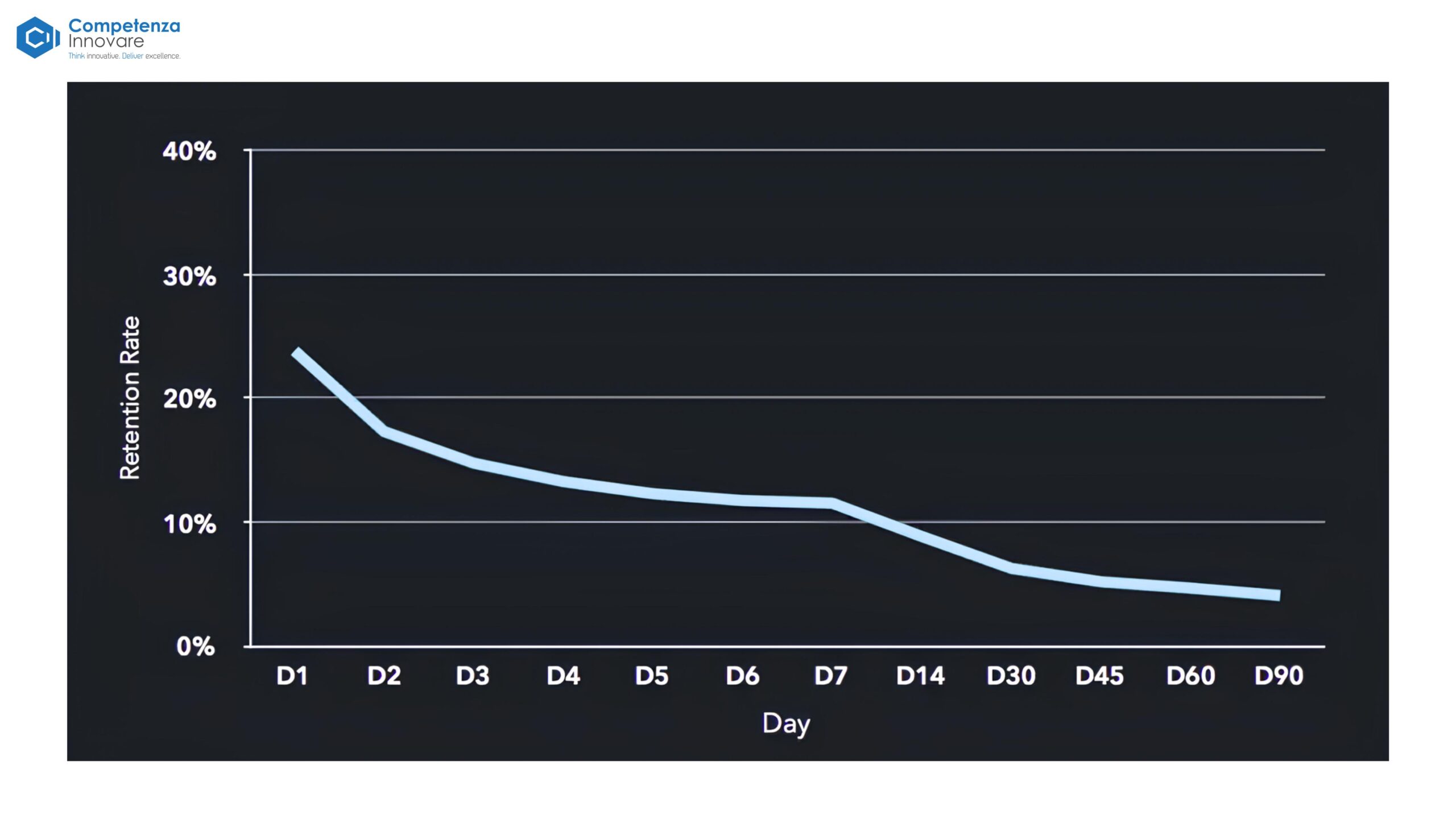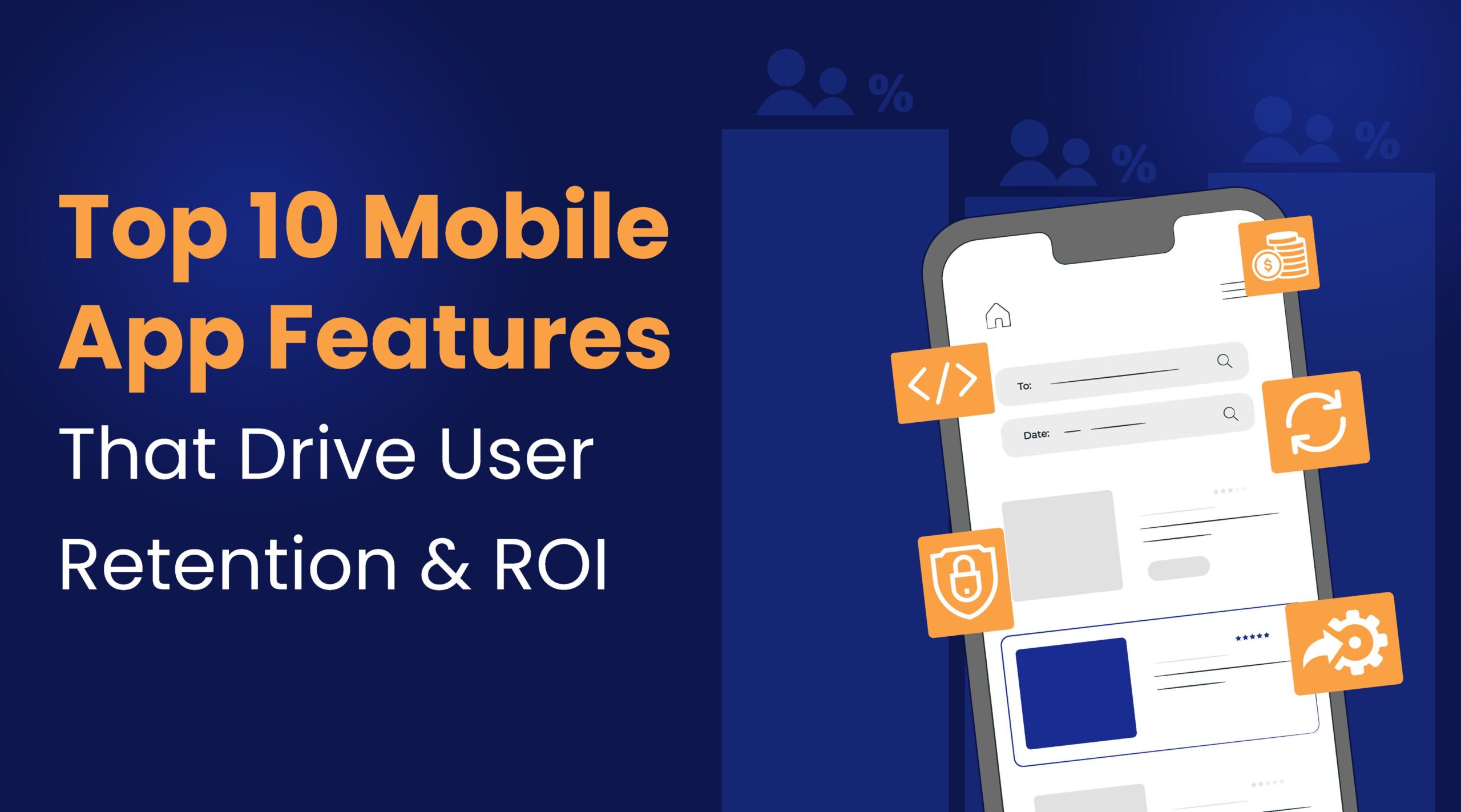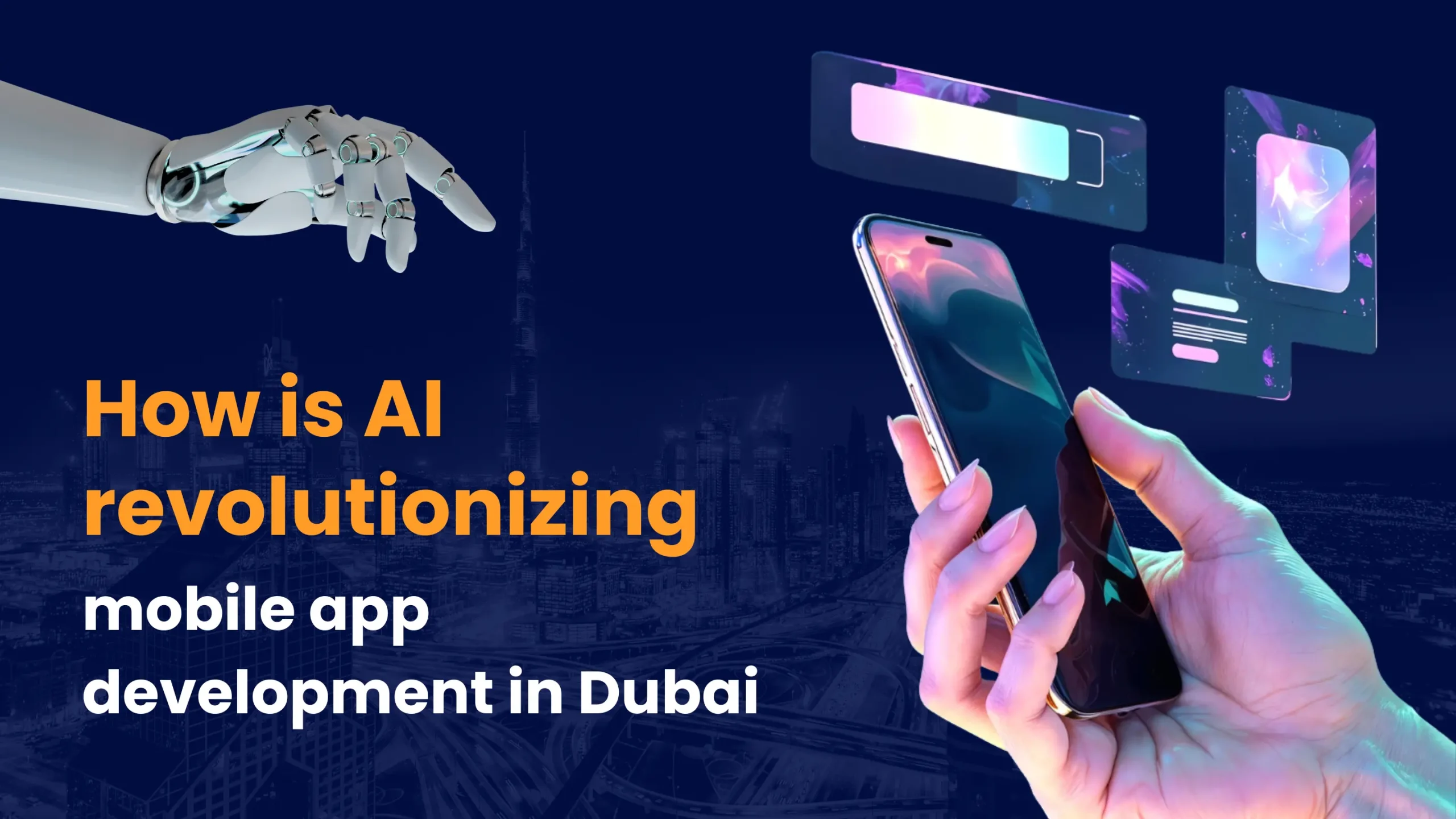Introduction
Retention rate for mobile apps is one of the most important factors for measuring your app’s ROI & success.
Why?
A good and healthy retention rate means that you are successfully converting new signups into loyal users. Low retention rate, on the other hand, indicates that the new users are not finding enough overall value to stick around.
A high number of app downloads may look impressive, but without retention, they mean very little. Studies show nearly one in four users abandon an app after just one use.

Retention is what drives ROI. Engaged users convert more, spend more, and refer more.
And what drives retention? Features.
The right mobile app features improve session time, reduce churn, and create stickiness that builds long-term value.
In this blog, we’ll highlight the top features that keep users coming back and help businesses in the Middle East turn mobile apps into ROI-generating platforms.
Mobile app features that drive user retention and ROI
1. Smooth Onboarding
Your app’s onboarding experience is its first handshake with the user, and in most cases, it determines whether they’ll continue further and come back.
A frictionless, clear, and goal-oriented app onboarding process improves activation rates and increases the chances of long-term engagement. Optimizing onboarding can improve user retention by up to 50%.
Users have been seen abandoning apps within the first minute due to cluttered screens, unnecessary sign-up forms, or confusing navigation.
Progressive onboarding- revealing features step-by-step based on user behavior is rather a smart approach.
Duolingo, for example, lets users try a language lesson immediately, before requiring account creation. This hooks interest before commitment.
In the Middle East, where language preferences and usage behavior vary widely, onboarding must also be localized. Aligning the flow with regional app usage patterns (like phone number sign-ins) & language patterns can greatly reduce drop-off rates.
Key elements of effective onboarding include:
- Social logins or OTP-based sign-ups for speed
- Optional tutorials with skip ability
- A clear value proposition in the first screen
- Feature highlights based on actual usage needs
2. Push Notifications (Done Right)
Push notifications can either bring users back or drive them away. The difference lies in timing, relevance, and personalization.
Poorly timed or generic messages are a leading cause of app uninstalls. But when done right, push notifications are one of the most powerful tools for boosting user engagement and improving app retention rates.
The key is to treat them not as reminders, but as contextual nudges.
For example, a fitness app that sends a motivational message at a user’s usual
workout time is far more likely to be welcomed than a random untimely alert.
Here’s what makes push notifications effective:
- Behavior-based triggers: e.g., alerting a user when they haven’t logged in for three days
- Personalization: Using names, preferences, past actions to tailor messages, and adjusting send times based on user time zones
- Actionable content: Messages that offer clear next steps (like ‘Continue your lesson’ or ‘Finish your checkout’, etc)
- Frequency control: Allowing users to set their own notification preferences(re-engagement without annoyance)
3. Offline Functionality
Offline access keeps your app relevant and usable during travel, patchy network, etc.
For businesses, it means more touchpoints, better session duration, reduced
churn during connectivity gaps, and more user trust.
Apps like YouTube, Google Docs, etc let users continue interacting, then sync data when they’re back online. A simple but powerful retention tool.
Common offline mobile app features users value:
- Downloadable content (music, videos, books, catalogs, etc)
- Offline form completion
- Local data entry with auto-sync later (e.g., expenses, notes, fitness logs)
- Access to previously viewed content (offline browsing history or saved items)
4. In-App Analytics and Feedback Tools
For users, access to in-app analytics provides visibility into their activity- how they use the app, what progress they’ve made, etc.
This enhances transparency, self-monitoring, and personalized experiences.
Feedback tools allow users to report bugs, rate features, suggest improvements, or view their own activity without leaving the app.
This gives users a voice and fosters a sense of ownership.
Apps that incorporate user-driven feedback loops see up to 25% higher retention, simply because users feel heard and valued. Tools like Instabug let users report issues with a shake of the phone, attaching screenshots and notes, making feedback simple and actionable.
5. Personalization
In a crowded app market, relevance is everything. Users want experiences tailored to their preferences, behavior, and goals. Personalization is a proven driver of higher engagement and retention.
In mobile apps, this translates to adaptive user flows, smart suggestions, dynamic interfaces, etc.
Apps like Netflix, Noon, etc lead with personalization, showing users what they’re most likely to watch or buy next. The result? More screen time, more clicks, and more conversions.
6. Integrations
Users expect apps to work seamlessly with the tools they already use. Whether it’s Google login, calendar sync, or making payments via their preferred methods.
Integrations simplify interactions with the app and that simplicity aids in retention.
When users don’t need to jump between apps/tools to act, it reduces friction, and the user journey becomes smooth.
Research shows that integrated communication tools alone can improve user engagement by over 30%.
Integrations users expect:
- Single sign-on and social logins
- Multiple payment gateways
- Cloud storage
- Location services
- Language and accessibility tools
7. Security and Data Privacy
A study by Cisco found that 32% of users abandon apps or services over data privacy concerns.
No matter how engaging your app is, users won’t stick around if they don’t feel their data is safe.
When users see clear privacy policies, encrypted data handling, and security-first design (like biometric logins), they’re more likely to trust the app, continue using it, and even recommend it.
For businesses in the Middle East, compliance with regional laws such like PDPL in the UAE, NDMO in Saudi Arabia is non-negotiable.
Ensuring local data storage and transparent consent practices can significantly impact retention in regulated industries like fintech, healthcare, etc
8. Intuitive App Navigation
Clear, intuitive navigation is fundamental to app retention. Users should not struggle to find what they need; if they do, they will leave.
UX clarity is a direct ROI factor, especially in productivity, eCommerce, and service apps where task completion equals business value.
What users expect from a good navigation:
- Clear hierarchy (home, key actions, profile/settings)
- Consistent placement of menus and buttons
- Easy access to high-frequency actions, like search, add-to-cart, or support
- Consistency across screens so users don’t have to relearn each step
- Smooth transitions(loading states, confirmations)
9. Real-Time Sync Across Devices
When users move between phones, tablets, and laptops, they expect their app experience to follow them without interruption.
Editing a document, making a purchase, or texting, real-time sync across devices ensures continuity, which is a major driver of retention.
Apps that support multi-device usage reduce friction and strengthen habit loops. A user can start a task on their phone and finish it later on a different device without repeating steps.
This seamlessness increases usage frequency and lowers abandonment risk.
Real-time sync is especially valuable in:
- Productivity apps
- Messaging and collaboration tools
- E-learning platforms
- E-commerce and finance apps
10. Regular Updates and Feature Enhancements
An app that evolves is an app that survives.
Regular updates not only keep your software secure and compatible but also signal to users that the product is alive, improving, and aligned with their needs.
According to Google’s Play Console guidelines, regularly updated apps are more likely to be featured in stores and retain higher review scores, which indirectly boost discoverability and credibility.
Updates also serve as mini-re-engagement campaigns. Release notes, push announcements can invite dormant users to return and explore what’s new.
What regular updates mean to users:
- Bugs are fixed quickly, improving stability
- Features evolve to match real-world usage
- Visual and UX refreshes keep the app modern
- Users feel valued when feedback turns into features
Conclusion
“Understanding your app’s retention rate, and how it stacks up to the benchmark rates seen in your vertical and across the larger mobile ecosystem, is an essential part of figuring out your customer engagement and retention strategy”
— Todd Grennan, Senior Content Producer at Appboy.
User retention is what drives revenue. Every feature you build should move the needle on how long users stay, how often they return, and how likely they are to recommend your app.
At Competenza, we design and build mobile apps with retention and ROI at the core.
Looking to build an app? Explore our mobile app development services and let’s build something that performs beyond the first download.
Reach out for a free consulting session, we would be happy to discuss and streamline your app idea.







